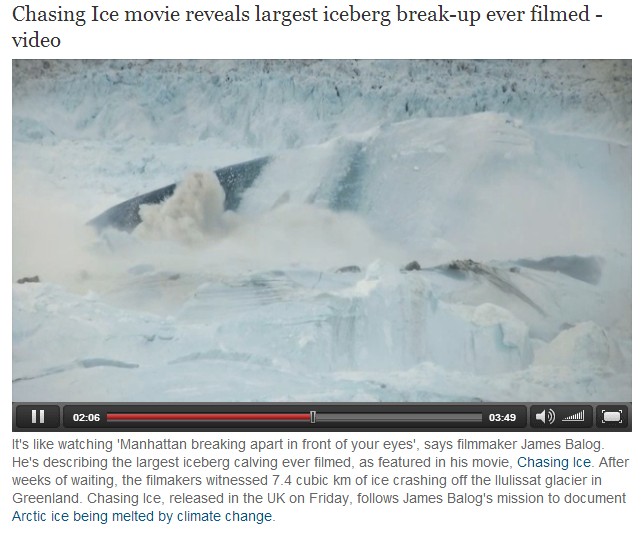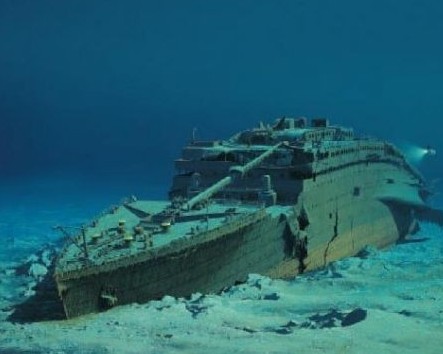Iceberg calving has nothing to do with melt, climate change or anything else these morons imagine. Glaciers flow to the sea and calve icebergs. That is what they do.
What does The Guardian think happens to the two trillion cubic metres of snow which falls on Greenland every year?




They knew all that a hundred years ago.
http://trove.nla.gov.au/ndp/del/article/64048019
Maybe newspapers are dumber these days.
Yes! The papers are indeed dumber these days. Just look at who they get their information from!
or this (1934):
http://trove.nla.gov.au/ndp/del/article/85163982
There are a lot of people who believe that icebergs calving off glaciers is evidence of global warming, probably because they are continously being shown footage of icebergs calving every time there is a news item about “global warming”.
As you say, without such calving the ice would build up on Greenland and the sea level would decline.
On the other hand, on a BBC news report about the Titanic memorial cruise, the journalist actually said that there were LESS icebergs nowadays, due to “global warming”.
The movie is a photographic “tour de force,” but the dialog is sprinkled with anthropomorphicisms, such as “dying glaciers” that are intended to compel emotionality and sadness at their “demise.” Added are references to humans as the proximate cause of the glacial carnage, and the more ludicrous (and totally unsupportable) assumption that we can “do something” about it.
Of course, glaciers wouldn’t be calving were it not for new snow falling “upstream” (remember that they are ice rivers) and adding to pressure flow that prompts release at the glacier’s oceanic terminus. And with some irony, the greater moisture availability arising out of the September opening of the Arctic combined with Polar Easterlies, has added new snow, measured in meters, to the overall surface of Greenland. Guess what!!! More pressure upstream on the West Greenland glaciers.
Of course, there’s much more, as glaciology is quite more complex than is hinted by the film’s narration. Surface coloration under a glacier influences its melt and flow rate. The darker the ground under the ice, the more rapid flow and melt occur, as short wave light making its way down through the ice finally reradiates at longer wavelengths when “hitting bottom” and hastens melt and flow.
See the movie if you enjoy stunning ice photography, but please keep your brain screwed in properly while parsing the dialog!